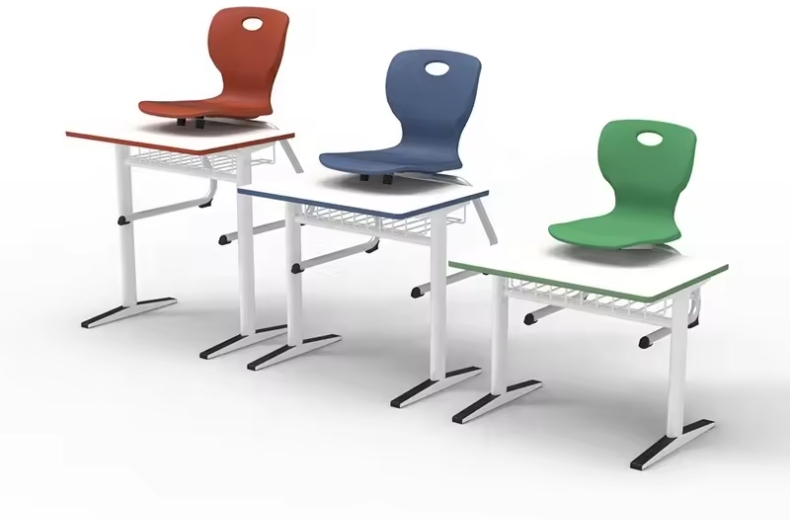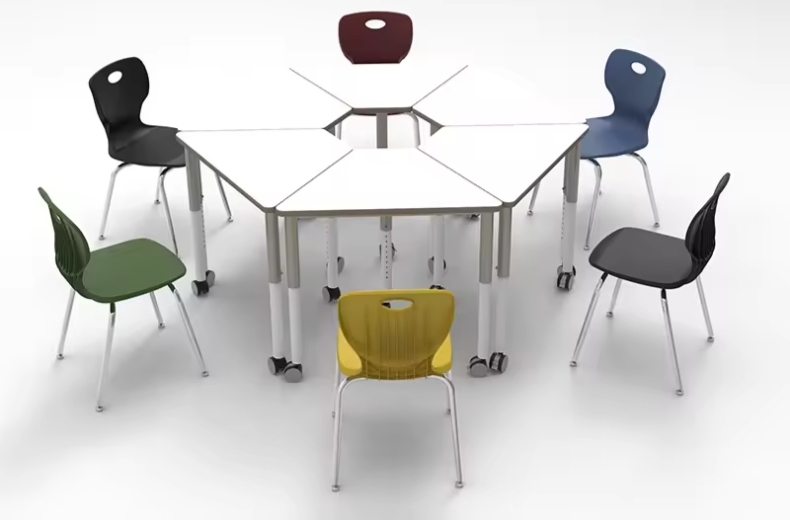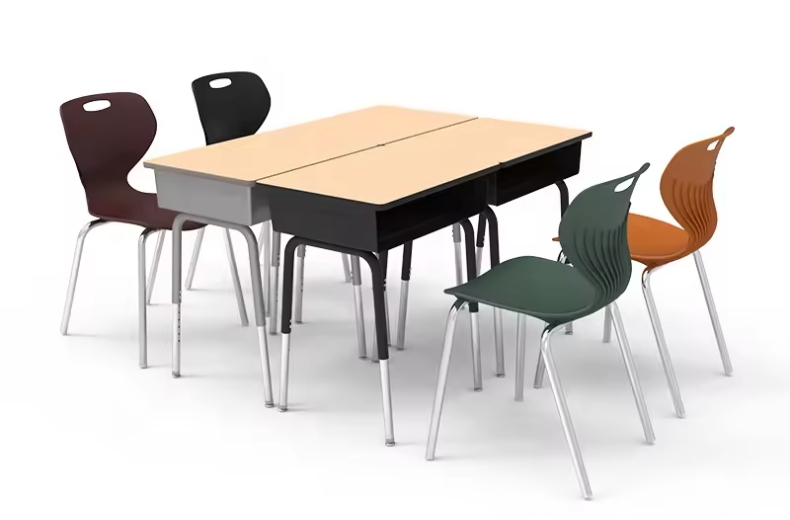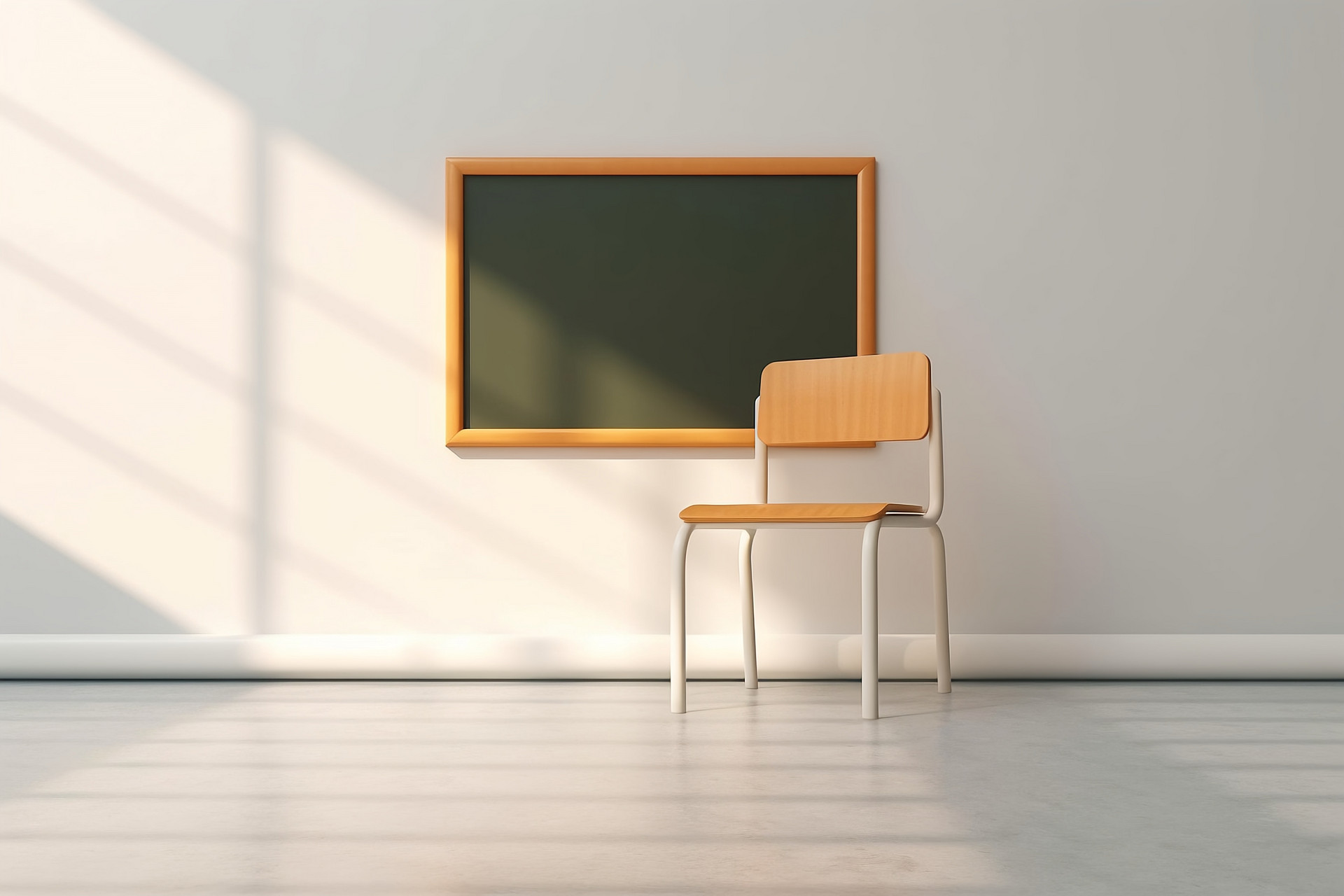Desks and chairs are one of the main equipment in schools and also essential tools for students' learning. Whether the configuration of desks and chairs is reasonable not only has a great impact on students' reading postures but also is related to abnormal spinal curvature and the occurrence of myopia. Configuring desks and chairs of appropriate sizes according to students' heights is beneficial for students to maintain their learning ability and protect their physical health.

The following problems are found:
The height of desks and chairs is unreasonable. In most primary schools, almost the same model of desks and chairs is used for all grades. There are very few schools that can equip desks and chairs of different sizes according to grades and students' heights. Lower grade students are also using desks that are far beyond the models that should be allocated according to their heights. For example, in a certain primary school, the desk is 80 centimeters high and the chair is 45 centimeters high. These children who are about 1.3 meters tall can only have their legs dangling and their heads just barely protruding above the tabletop. In a class, the maximum height difference among students often exceeds 20 centimeters. Sitting on desks and chairs of the same height is rather difficult. Moreover, even if some classrooms have desks of different models, teachers do not adjust them according to height. Normal-height students cannot have comfortable matching desks and chairs, let alone those who are taller or shorter. The phenomena of "tall students with low desks" or "short students with high desks" are very common.
The comfort of using desks and chairs is poor. Generally, the drawer of a desk is about 10 centimeters high, but now many children's schoolbags are as thick as 15 to 20 centimeters and simply cannot fit in. Some students put their schoolbags in front of the back of the chair. People sit on the front half of the chair to attend class. The seat is not large, and the buttocks can only "sit" on the edge of the chair. Some children accidentally slip under the desk, which not only affects their physical health but also greatly affects classroom efficiency. Some children hang their schoolbags on the hooks attached to the side of the desk. The originally narrow passageway, occupied by schoolbags, cannot be passed through normally and there are also potential safety hazards. There are also some desks and chairs that have poor comfort in use and excessive methanol, which also seriously threaten students' physical health.
 The new functions of desks and chairs are in name only. Although some schools are equipped with desks and chairs that can be adjusted according to height, in actual use, they are not adjusted in time according to students' heights, ignoring students' needs, and the "adjustable" function is in name only.
The new functions of desks and chairs are in name only. Although some schools are equipped with desks and chairs that can be adjusted according to height, in actual use, they are not adjusted in time according to students' heights, ignoring students' needs, and the "adjustable" function is in name only.
The harms caused by this unreasonable configuration of desks and chairs to students are:
In terms of learning. First, it leads to poor handwriting. Incorrect pen-holding postures almost inevitably lead to crooked fonts, distorted shapes, scattered structures, and weak strokes in written characters. Second, it leads to slow writing speed. Correct sitting postures can increase writing speed by more than 30%. It can be seen that incorrect sitting postures will waste so much precious time of children!
 In terms of physical health. First, it leads to myopia. In order to write neatly and well, students have to find a way to watch the movement of the pen tip. Due to uncomfortable seats, it is very natural for them to tilt their heads to the left. This is extremely easy to cause myopia and strabismus! Second, it leads to sideways curvature of the body. Due to too low desks, some students hunch over, looking like a hunched old man, which will also affect the normal development of the spine and cervical vertebrae. Third, if the chair is too high, the thighs will be pushed against by the table and cannot reach under the table, and students will sit cross-legged to attend class. After a class, students will feel very tired, seriously affecting their physical and mental health.
In terms of physical health. First, it leads to myopia. In order to write neatly and well, students have to find a way to watch the movement of the pen tip. Due to uncomfortable seats, it is very natural for them to tilt their heads to the left. This is extremely easy to cause myopia and strabismus! Second, it leads to sideways curvature of the body. Due to too low desks, some students hunch over, looking like a hunched old man, which will also affect the normal development of the spine and cervical vertebrae. Third, if the chair is too high, the thighs will be pushed against by the table and cannot reach under the table, and students will sit cross-legged to attend class. After a class, students will feel very tired, seriously affecting their physical and mental health.
With the improvement of people's material living standards, the congenital nutrition and postnatal conditioning of children and adolescents have received great attention from families and society. Their heights and weights have increased significantly. New requirements have been put forward for the height and width of school desks and chairs, and they must be increased to meet their physiological needs. Therefore, the design of desks and chairs must conform to ergonomic principles and keep up with the times.

